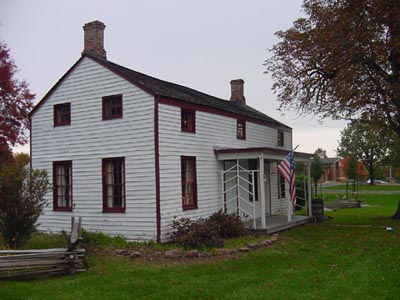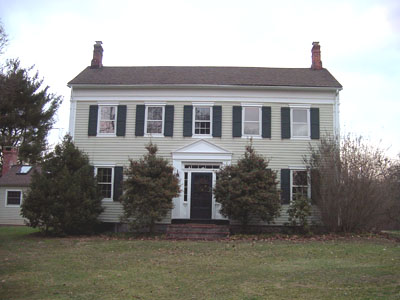ARCHITECTURE
Folk Houses
Folk Houses were built to provide a basic structure to provide a comfortable home and shelter for a family. Abstract patterns and fashion were not a concern when these types of homes were built. Early folk homes were built from materials found near the site of the house: timber, rock, or clay. The home's carpenter or carpenters were usually the ones to live in the home. These building designs were usually handed down from generation to generation, therefore, over time, these homes continued to show little change in design.
• Native American
Our country's first folk homes are classified as Native American. These structures were built solely using simple materials found in the region of the Natives. The humble homes they lived in consisted of raw material; sticks, mud, reeds, and so on. It wasn't until the arrival of early European settlers that homes begin to take a more modern form.
• Pre-Railroad
Upon the arrival of early European settlers, a more complex design of folk homes began to take shape. The Europeans still, without the ability to import materials, used techniques like the Native Americans, using materials found on the site of their future home. This method of construction occurred up through the 17th century.
• National Design
As the creation of the railroads began in the 19th century, the homes became sturdier and stronger than those previously mentioned. The reason for this is because of the materials being transported into areas by the railcars. These homes, which are seen frequently throughout Readington Township, are classified as the National Design.
The most common of the three branches of Folk Houses in Readington, are houses of the National Design, built Circa 1850-1890. Houses built within this period of folk tradition have more complicated design than those of Native American and Pre-Railroad. Although these do not represent the most elaborate design in historical architecture, the better material brought by the railroads allowed for stronger, and more handsome homes. These homes are easy to spot, simply designed and no real distinct features in comparison to the more elaborate homes on this site.
These Nationally Designed I-House stay very true to the term “architectural melting pot.” Here we see a chimney adorning both sides of the house as seen in the front view of the homes.
 |
 |
| Basic, two story, three bay, I-House of the mid 1800's | Two story, five bay, I-House of the mid 1800's |

